 |
 |
 |
| |
Earlier Occurrence of the Frailty Phenotype in HIV-1-infected Men than in HIV-uninfected Men in the Multicenter AIDS Cohort Study (MACS)
|
| |
| |
Reported by Jules Levin
CROI 2011 March 2 Boston
Joseph B. Margolick1, Xiuhong Li1, Roger Detels2, John Phair3, Charles Rinaldo4and Lisa Jacobson1, 1-Johns Hopkins University, Baltimore MD USA;2-University of California Los Angeles, Los Angeles CA USA; 3-Northwestern University, Chicago IL USA ; 4-University of Pittsburgh, Pittsburgh PA USA
(from Jules: of note some potential confounders like history of substance abuse etc have not yet been accounted for in finding)
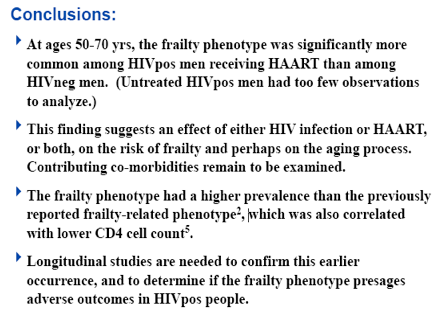
Background: HIV infection may be associated with earlier onset of outcomes related to aging. Frailty, a manifestation of aging, is associated with a high risk of adverse outcomes. HIV infection has been linked to a frailty-related phenotype connoting an increased risk of death or AIDS after starting HAART. Here, we investigated whether the prevalence of the frailty phenotype by age differed between HIV- and HIV+ men in the Multicenter AIDS Cohort Study (MACS).
Methods: The MACS, a longitudinal study of men who have sex with men, incorporated frailty phenotype assessments in 2007, with frailty phenotype at 1 person-visit defined as having ≥3 of the following: low grip strength; slow 4-meter walking speed (both <20th percentile of HIV- men); low physical activity; exhaustion (both assessed by SF-36 questionnaire); and unintentional weight loss of >10 pounds. Data from MACS visits 51 and 52 (April 2009 to March 2010) were evaluated. Significance of prevalence ratios (PR) was tested by Poisson regression.
Results: Over 2850 person-visits (1451 HIV-, 92 HIV+ without HAART, 1307 HIV+ with HAART), the frailty phenotype was present in 9.0% of HIV- person-visits, 8.7% of HIV+ person-visits without HAART, and 12.0% of HIV+ person-visits with HAART. Frailty phenotype prevalence and prevalence ratios by age for HIV+ with HAART and HIV- are shown in the table. After adjustment for age, frailty phenotype prevalence in HIV+ men receiving HAART was inversely associated with CD4 cell count (PR = 2.1, 1.7, and 1.6 for counts of <200, 201 to 350, and 351 to 500/μL, respectively, compared to >500/μL; all p <0.02), and directly associated with viral load (PR = 1.89 for ≥50 copies/mL vs <50 copies/mL; p <0.001). The age to-adjusted prevalence of frailty phenotype for HAART users was elevated compared to HIV- even in men with viral load <50 copies/mL (PR = 1.35, p = 0.047).

Conclusions: At ages 50 to 70 years, the frailty phenotype was significantly more common among HIV+ men receiving HAART than among HIV- men. This finding suggests an effect of either HIV infection or HAART, or both, on the risk of frailty and perhaps on the aging process. Longitudinal studies are needed to confirm this earlier occurrence, and to determine if the frailty phenotype presages adverse outcomes in HIV+ people.
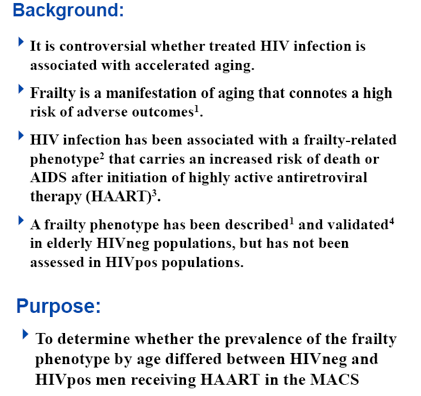
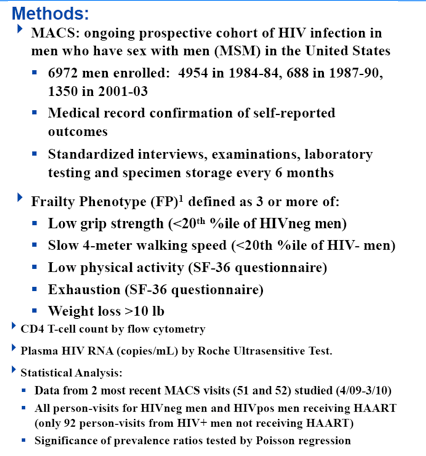
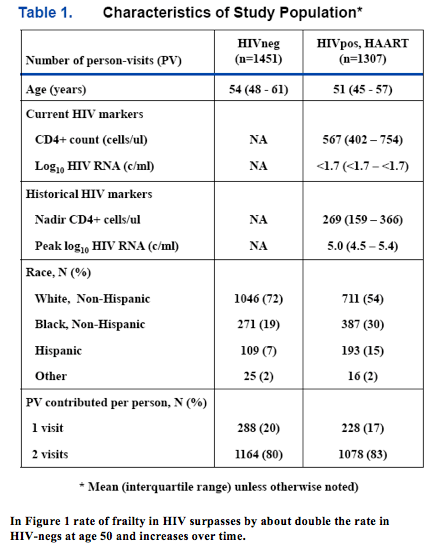
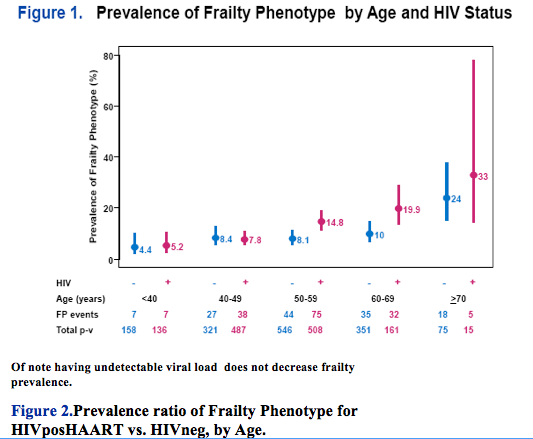
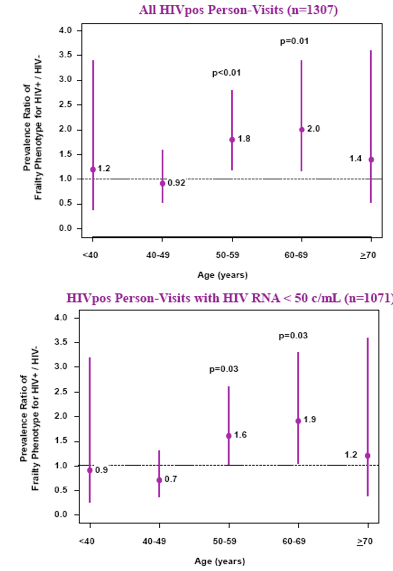
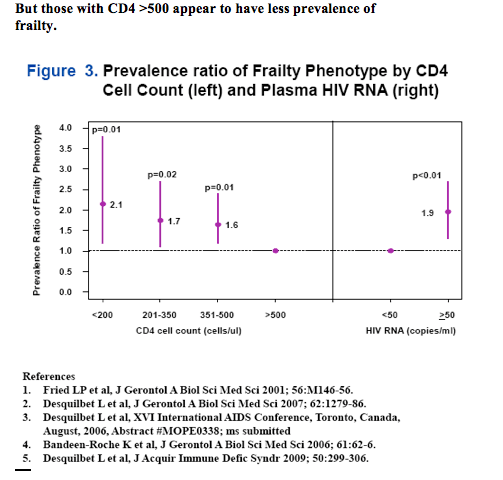
|
| |
|
 |
 |
|
|